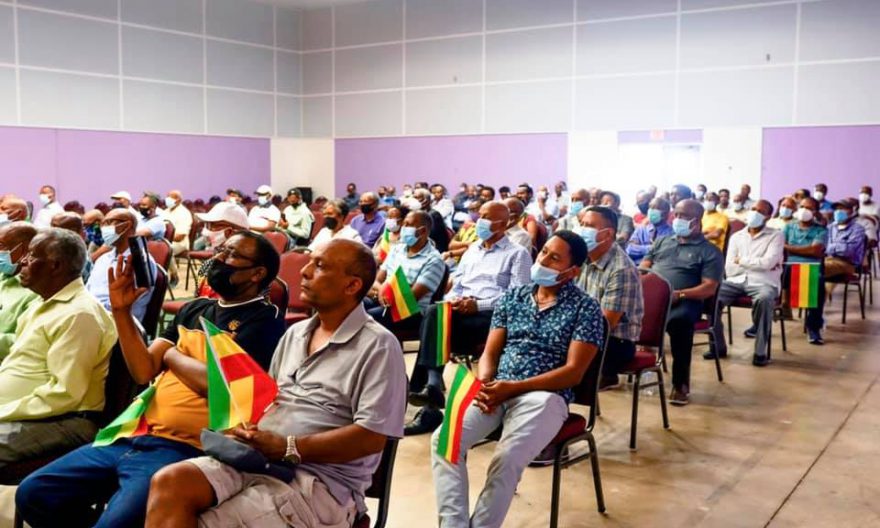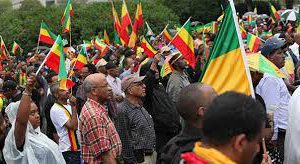
Helping one another is a symbol and culture of Ethiopians especially when someone or somebody has failed into an awkward situation. Likewise, the people in this country, be residing abroad or home, rouse in unison at times when the country faces difficulties beyond its capacity. As the country is in a transition period, it is expected to see displacement of people from one corner of the country to the other as a result of interpersonal conflicts between armed forces.
As they are exposed to violence and death, such a scenario is a headache particularly for women and children of Ethiopia. In this obscure time, lending hands for the people who were directly or indirectly affected by the war is expected from all Ethiopians especially the Diaspora. Indeed, the Diaspora community has been striving to assist various development projects carried out in the country for years. Nothing makes someone happy than that of supporting the helpless people who are looking at the hands of others.
Taking the aforementioned statement into account, the Ethiopian Diaspora residing in the US, Dallas has passed mesmerizing evenings from 10:00 to midnight. They, apart from deliberating about what is going on at home, do not prefer to put their arms on their chest. They would rather agree to support the displaced people through contributing some amount of money from their pocket. Beyond passing important messages, the Diaspora community contributed 140,000 USD for the people in need. This amount of birr has never been collected at a time. “This is a new record,’ said Ambassador Fitsum Arega urging the Ethiopian diaspora residing in other states to follow the suit of Ethiopians in Dallas.
Approximately 251,000 Ethiopian immigrants and their children (the first and second generations) live in the United States, and Ethiopia-born immigrants account for 0.5 percent of the total U.S. foreign-born population. The size of the Ethiopia-born population in the United States grew rapidly from a small base in recent decades; in 1980, about 10,000 Ethiopian immigrants reside in the United States.
Today, Ethiopia-born immigrants constitute the United States’ second-largest African immigrant group after Nigeria. Sixty percent of Ethiopian immigrants to the United States arrived during or after 2000, making this the most recently settled of the 15 groups in the Rockefeller Foundation-Aspen Institute Diaspora Program (RAD) analysis. Despite being recently settled in the United States, nearly half of all Ethiopian immigrants are U.S. citizens. The majority of Ethiopian immigrants who recently gained legal permanent residence did so through family reunification or diversity visa programs, although many in this population were admitted as refugees, according to the study prepared for Rockefeller foundation Aspen Diaspora Programme (RAD).
Of the 15 diaspora groups in the RAD analysis, the Ethiopian first and second generations are among the youngest populations in their respective generation.1 Ethiopian immigrants in the United States have a median age of 37, and the vast majority of the population is working age (86 percent). The median age of the children of Ethiopian immigrants (the second generation) is 7, and 62 percent of those in the second generation have a mother and father who were born in Ethiopia.
While the Ethiopian diaspora has similar educational attainment as the U.S. population over- all and is more likely to be in the labor force, its average household income is substantially lower. The median annual income for Ethiopian diaspora households is $36,000, significantly below the overall U.S. median income of $50,000 and among the lowest of the 15 RAD analysis groups. Moreover, only 11 percent of Ethiopian diaspora households have annual in- comes over $90,000, the threshold for the top 25 percent of U.S. households. Members of the Ethiopian diaspora are more likely than the general U.S. population to be in the labor force (74 percent versus 64 percent), but they are far less likely to be in professional or managerial occupations than U.S. workers overall (20 percent versus 31 percent).
Within the United States, the largest numbers of Ethiopian immigrants live in the states of California, Virginia, Maryland, Minnesota, and Texas. Ethiopian immigrants are more heavily concentrated in Washington, DC and its surrounding communities than in any other metropolitan area in the country, but nonetheless make up only 0.6 percent of the population. The Minneapolis, Seattle, and Atlanta metropolitan areas are also Ethiopian immigrant population centers.
The Ethiopian diaspora has established numerous, well-funded organizations throughout the United States, particularly in the Washington, DC and Los Angeles metropolitan areas. Despite the plethora of organizations, the only national umbrella group appears to be the Ethiopian Students Association. The core missions of the 45 Ethiopian diaspora organizations identified for the RAD analysis typically fall into one or more of three broad categories: the development of Ethiopia, social services and integration assistance to the Ethiopian population in the United States, and the welfare of certain religious communities. Some of these organizations were founded to provide refugee resettlement services to the Ethiopian community in the United States, although the most prominent of these groups, the Ethiopian Community Development Council, has extended its work to assist other refugee communities as well; it is one of nine national refugee resettlement agencies that partner with the U.S. government’s refugee resettlement program.
Other well-resourced groups are the North American Conference on Ethiopian Jewry, African Services Committee (which principally serves refugees of Ethiopian origin), the Ethiopian Community Association of Chicago, and the Ethiopian Orthodox Tewahedo Church.
Members of the Ethiopian diaspora are also active in diaspora organizations that involve groups of many national origins, such as the Diaspora African Women’s Network (DAWN).
The United States is the most common destination for Ethiopian emigrants and the top source for remittances to Ethiopia. The Ethiopian Diaspora has sent 3. 3 billion USD remittance during the 11 months of the concluded budget year and invested 37.8 billon Birr during same period, according to the Ethiopian Diaspora Agency. The diaspora transferred the highest amount of remittance than in the last two years despite the COVID-19 pandemic.
The Agency stated that, 3. 3 billion USD remittance was sent by the diaspora during the last 11 months of the concluded Ethiopian budget year. Some 6,406 members of the diaspora have also opened hard currency accounts at banks in Ethiopia depositing over 7 million USD.
Projects registered with 37.8 billion Birr capital in investment areas of various sectors like hotel, agriculture, manufacturing, agro-processing, among others, and owned by the Diaspora have been established, it said.
From among the total projects, 84 have become operational, creating 13,000 jobs in Addis Ababa, Amhara and Oromia regions, with a capital of 3.9 billion Birr in total.
The director-general has further called on the Ethiopian community to actively participate in national issues and investment.
BY STAFF REPORTER
The Ethiopian Herald 10 August 2021




